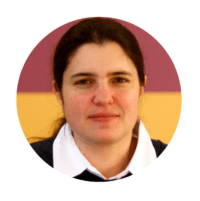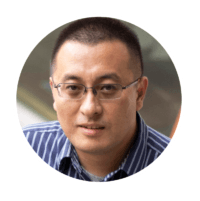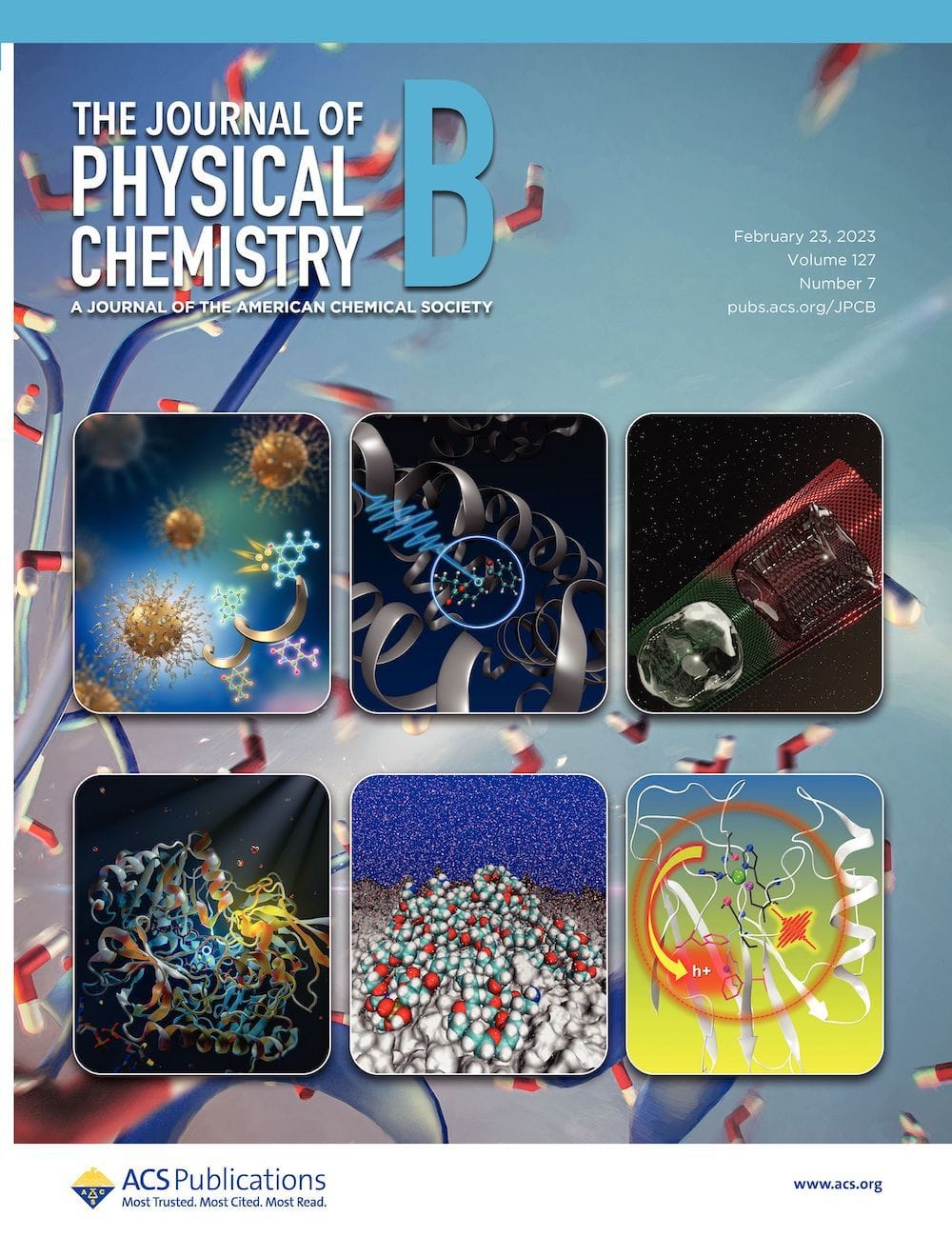The Journal of Physical Chemistry (JPC) and the Physical Chemistry Division of the American Chemical Society (PHYS) are excited to announce the recipients of the 2019 The Journal of Physical Chemistry and PHYS Division Lectureship Awards: Artur Izmaylov—Associate Professor, Department of Physical and Environmental Sciences, University of Toronto Scarborough; Department of Chemistry, University of Toronto […]

The Journal of Physical Chemistry (JPC) and the Physical Chemistry Division of the American Chemical Society (PHYS) are excited to announce the recipients of the 2019 The Journal of Physical Chemistry and PHYS Division Lectureship Awards:
- Artur Izmaylov—Associate Professor, Department of Physical and Environmental Sciences, University of Toronto Scarborough; Department of Chemistry, University of Toronto
- Heather J. Kulik—Associate Professor, Department of Chemical Engineering, Massachusetts Institute of Technology
- Wei Xiong—Assistant Professor, Department of Chemistry and Biochemistry, University of California, San Diego
Co-sponsored by JPC and the PHYS Division, the Lectureship Awards honor the contributions of investigators who have made major impacts on the field of physical chemistry in the research areas associated with each JPC section—A, B, and C.
“We are delighted to honor three outstanding researchers with JPC-PHYS Lectureship Awards,” said JPC Editor-in-Chief George C. Schatz. “Artur, Heather, and Wei represent the leading edge of physical chemistry in their respective fields; they have been excellent JPC authors, and I’m sure they will give great lectures.”
The 2019 JPC and PHYS Division Lectureship Awards will be presented at the 2019 ACS Fall National Meeting August 25-29, 2019, in San Diego, California. The lectureship session and award presentation will be Tuesday, August 27, from 1:30 p.m. to 5:15 p.m. at the Marriott Marquis San Diego Marina, Marriott Grand Ballroom, Section 13.
The Editors of JPC and leaders of the PHYS Division encourage you to attend the award symposium. For now, read these brief interviews with the winners on their research and their thoughts on where the field is headed.
Artur Izmaylov: JPC A Award Recipient
Dr. Izmaylov is an Associate Professor, Department of Physical and Environmental Sciences, University of Toronto, Scarborough, and Department of Chemistry, University of Toronto. Here’s what he had to say about the field and his research.
What are you working on now?
I am developing algorithms for quantum computers to solve the electronic structure problem.
What advances are you hoping to see in your field in the next decade?
I hope to see quantum computers surpassing their classical counterparts in solving quantum chemistry and molecular dynamics problems.
What is the No. 1 piece of advice you would give someone who’s considering a career in your area of research?
I would advise them to be patient and to understand the basics of studied physical phenomena by considering very simple, exactly solvable models first, and only then to study the manifestation of these phenomena in real systems.
Read some JPC articles by Dr. Ismaylov:
On Construction of Projection Operators
J. Phys. Chem. A, 2019, 123, 15, 3429-3433
DOI: 10.1021/acs.jpca.9b01103
Nonadiabatic Quantum Dynamics with Frozen-Width Gaussians
J. Phys. Chem. A, 2018, 122, 29, 6031-6042
DOI: 10.1021/acs.jpca.8b03404
Quantum Nonadiabatic Cloning of Entangled Coherent States
J. Phys. Chem. Lett., 2017, 8, 8, 1793-1797
DOI: 10.1021/acs.jpclett.7b00596
Heather J. Kulik: JPC B Award Recipient

“The JPC B Lectureship is awarded to Professor Heather Kulik for her groundbreaking work in the development of first-principles and machine learning methodologies for the design of bioinspired inorganic catalysts and to elucidate enzyme mechanisms,” said JPC B Deputy Editor, Joan-Emma Shea.
Dr. Kulik is an Associate Professor, Department of Chemical Engineering, Massachusetts Institute of Technology, in Cambridge, Massachusetts. Here’s what she had to say about the field and her research.
What are you working on now?
My group works in a lot of areas, but I’d say what I’m most excited about us finishing up right now is multi-objective optimization approaches to target catalyst/materials stability and activity with the aid of machine learning models to explore large (> 1M) compound spaces.
I’m also excited about systematic methods we are developing to understand the length-scales over which electronic structure properties are coupled in proteins to try to understand quantum mechanical contributions to catalytic action in enzymes.
What advances are you hoping to see in your field in the next decade?
In theoretical chemistry, new methods are developed every day that are orders of magnitude more accurate and efficient than methods that were available when I was a student. At the same time, machine learning has really captivated the community, leading to the exponential growth of new models and approaches that could someday replace these methods.
In light of this, where I hope the field grows most in the next decade, beyond continuing to educate users about the differences in these methods, is thinking about building systematic tools that simplify method selection and the determination of method accuracy. Both developing these tools and making them accessible to a broad user base seem essential to strengthening computational chemistry’s role as a useful complement to experimental efforts.
What is the No. 1 piece of advice you would give someone who’s considering a career in your area of research?
Read. Read early, read widely, read often. Don’t worry about reading a paper all the way through the first time and understanding everything. Instead, take note of what you don’t understand.
This advice likely applies to all fields, but I find it is extremely important in theoretical and computational chemistry. When I was starting out as a student, I’d get intimidated when I felt I didn’t understand a paper well enough. There are still some papers I do not understand, but I find that reading often and widely helps fill in the gaps! Also, now I know that sometimes when I do not understand a paper, it is simply because there may be opportunities for new directions the authors had not thought of.
Read some JPC articles by Dr. Kulik:
Quantum Mechanical Description of Electrostatics Provides a Unified Picture of Catalytic Action Across Methyltransferases
J. Phys. Chem. Lett., 2019, 10, XXX, 3779-3787
DOI: 10.1021/acs.jpclett.9b01555
Resolving Transition Metal Chemical Space: Feature Selection for Machine Learning and Structure–Property Relationships
J. Phys. Chem. A, 2017, 121, 46, 8939-8954
DOI: 10.1021/acs.jpca.7b08750
Accelerating Chemical Discovery with Machine Learning: Simulated Evolution of Spin Crossover Complexes with an Artificial Neural Network
J. Phys. Chem. Lett., 2018, 9, 5, 1064-1071
DOI: 10.1021/acs.jpclett.8b00170
Wei Xiong: JPC C Award Recipient

“Wei Xiong is pioneering sum-frequency generation spectroscopy and microscopy techniques to examine problems related to energy storage and water purification,” said JPC C Deputy Editor, Catherine J. Murphy.
Dr. Xiong is an Assistant Professor, Department of Chemistry and Biochemistry, University of California, San Diego. Here’s what he had to say about the field and his research.
What are you working on now?
One area we are working on is studying chemical physics and dynamics of molecular vibrational polaritons. Molecular vibrational polaritons are hybrid quantum states between cavity photons and molecular vibration excitations under strong coupling conditions. The spatial overlap between cavity modes and a collection of molecular vibrational modes gives rise to strong coupling, and it results in polaritons possessing properties of both photons and molecules.
Our recent work shows peculiar optical properties and dynamics of polaritons, including plasmon-like hot vibration dynamics, novel optical nonlinearity effects, and it enables new molecular energy transfer mechanisms using polaritons. These new polariton molecular physics observations can provide insights into newly reported cavity chemistry, and these results have implications in photonics and quantum science information.
Another area we are working on is to push the frontiers of vibrational sum frequency generation spectroscopy. Through the development and application of adding time and spatial dimension to this technique, we can gain molecular specific charge dynamics at hidden charge transfer interfaces and reveal mesoscopic spatial heterogeneity in self-assembled materials.
What advances are you hoping to see in your field in the next decade?
I hope molecular polaritons can fulfill their potential as a quantum information technology platform and provide a new handle for controlling chemical reactions. It would be a great example of fundamental molecular physics contributing to the advances of real-world technology.
I also look forward to seeing advancements of new coherent hyperspectral imaging techniques. I hope one day we have the ability to resolve structure and dynamics of molecules and materials from multiple dimensions,( e.g., temporal, energy, spatial, etc.) so that complex physical processes in charge and energy transfer and chemical reactions can be comprehensively studied and unraveled.
What is the No. 1 piece of advice you would give someone who’s considering a career in your area of research?
Trust your instinct, never limit yourself to the comfort zone, and talk to many people!
Read some JPC articles by Dr. Xiong:
State-Selective Polariton to Dark State Relaxation Dynamics
J. Phys. Chem. A, 2019, ASAP
DOI: doi.org/10.1021/acs.jpca.9b04601
Solving the “Magic Angle” Challenge in Determining Molecular Orientation Heterogeneity at Interfaces
J. Phys. Chem. C, 2016, 120, 36, 20239-20246
DOI: 10.1021/acs.jpcc.6b08093
Short-Range Catalyst–Surface Interactions Revealed by Heterodyne Two-Dimensional Sum Frequency Generation Spectroscopy
J. Phys. Chem. Lett., 2015, 6, 21, 4204-4209
DOI: 10.1021/acs.jpclett.5b02158
